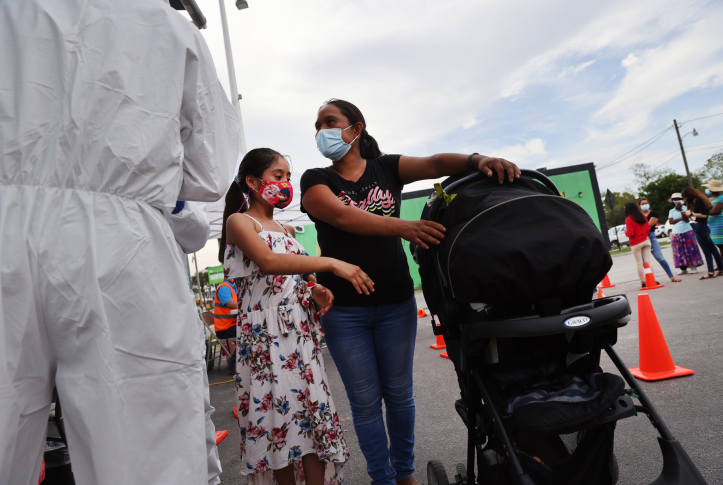The Inflation Reduction Act is a major policy achievement. The law extends generous marketplace health plan subsidies for three years and shields enrollees from the effects of steep premium increases. But these achievements cannot overshadow an enormous health equity problem: an estimated 2.3 million uninsured impoverished adults are ineligible for affordable coverage because they fall into the Medicaid coverage gap. That is, they are too poor for Affordable Care Act (ACA) subsidies, yet ineligible for Medicaid. This predicament became visible when full ACA implementation began in 2014 and some states rejected expansion, as they were allowed to do following the 2012 Supreme Court decision.
Experts initially assumed no state would make its own residents pay such a steep price for ACA politics or intentionally forgo hundreds of billions of dollars in federal Medicaid financing. About half the initial refusal states have reversed course and expanded, but an equal number continue to refuse expansion. Given the demographics of the nonexpansion states, which are heavily concentrated in the South, Black Americans have disproportionately borne the burden of this refusal, making it one of the most glaringly visible examples of the racial health inequities of 21st century America.
There is movement. Missouri and Oklahoma voters succeeded in expanding Medicaid through constitutional expansion referenda. A South Dakota referendum to adopt expansion is on the ballot this fall. There have been signs of movement in North Carolina, where the State Senate has approved expansion if tied to a section 1115 Medicaid compulsory work demonstration, although there is hope that such a condition would not remain in the final bill. Georgia seeks to expand but with strictures — a compulsory work rule and eligibility limits well below the ACA expansion minimum of 138 percent the federal poverty level ($38,295 for a family of four). To date, a federal district court in Georgia has rejected the Biden administration’s effort to reverse the Trump administration’s approval of compulsory work as a condition of eligibility.
But even if South Dakota voters support expansion, and North Carolina lawmakers put aside a condition that will inevitably be rejected given the adverse impact of compulsory work experiments, this still leaves 10 nonexpansion states. As such, federal lawmakers face a clear choice: to continue to respect state autonomy despite the health equity impact or to mitigate the effect through a time-limited solution that helps residents while continuing to encourage expansion. The House-passed 2021 Build Back Better (BBB) Act opted for health equity by establishing a temporary subsidy program, followed by a time-limited federally administered Medicaid program that would serve people caught in the coverage gap.
The BBB program would have provided access to marketplace coverage for below-poverty residents of nonexpansion states. It would have fully paid the premiums through 2025 and heavily subsidized cost sharing, just as Medicaid does. In 2024, these special marketplace plans would have offered nonemergency transportation and expanded preventive benefits. These substitute plans were not as robust as Medicaid; they would not have offered enhanced coverage for long-term care nor would covered young adults for extra preventive care, like Medicaid does through its EPSDT benefit. But the temporary system would have made coverage available to millions and ended a gross inequity. The steady increase in private insurance enrollment among patients with incomes at or slightly above the marketplace subsidy threshold (138% of the federal poverty level, or $25,268 for a family of two in 2022) suggests that when private plans are affordable, they are popular.
But these provisions were dropped from the final 2022 package, in part because of a Senate preference for voluntary state expansion. In addition, the Congressional Budget Office (CBO) treated the fallback provision as new spending that had to be offset under reconciliation rules. Had the states expanded on their own, the new spending associated with expansion would not have required offsets since it was already accounted for under the ACA.
Efforts to address health care equity must be grounded in reality. The Supreme Court’s bar against mandatory expansion rests on constitutional grounds; Congress cannot simply reverse it. Voluntary state expansion certainly is preferable, since it signals popular support. It is unlikely that a temporary mitigation strategy such as a time-limited marketplace subsidy fallback would induce states to drop expansion in favor of a short-term alternative. Indeed, unwinding a Medicaid expansion of this magnitude has enormous legal, operational, and financial implications. Even the CBO, in its cost estimate, acknowledged that reversal is unlikely.
But there is little reason to think that nonexpansion states will come on board soon; the politics of Obamacare resistance are deeply entrenched. Furthermore, several states have succeeded in eliminating the fiscal pain of nonexpansion by negotiating 1115 demonstrations that include massive uncompensated care pools that offset federal funding losses. As an added benefit, these come without the federal entitlement rights that the Medicaid expansion creates. More voter initiatives are unlikely, as many states lack the voter initiative pathway successfully employed by other states.
It remains to be seen whether Congress will return to this pressing matter of basic health equity. Much depends on the midterm elections, but also on the extent to which federal lawmakers of every political stripe are willing to argue that fundamental fairness outweighs a state’s right to deprive residents of basic health care.

